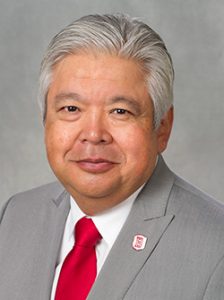The possibility of tuition-free community college has garnered a significant amount of buzz after being proposed by President Barack Obama in early January.
Still in its early stages, the White House’s plan aims to give students the opportunity to save more than $3,000 in tuition while attending two-year institutions for transferable college credit. The only qualifications necessary would be part-time enrollment, a 2.5 GPA and a strong desire to gain an education.
“What matters is effort and merit; that’s the promise of America,” Obama said during a Jan. 9 visit to Tennessee. “And the way we deliver on that is making sure our education system works on behalf of every person who lives here.”
So far, many students and college administrators have responded to the presidential proposal in ways ranging from highly enthusiastic to slightly skeptical. This also holds true for Bradley students, as the plan has sparked both optimism and curiosity on the Hilltop.
Senior biochemistry major Thomas Norman said the proposal would not only be beneficial for those who struggle to balance paying for school and succeeding in class, but also in serving as an easily accessible primer for university life.
When it comes to the possibility of receiving two years of free general education courses, junior sports communication major Kristina Joseph said she believes the opportunity would contribute to promoting a more well-rounded society as a whole.
“It is absolutely ridiculous for us to have to pay thousands of dollars to get a general education,” Joseph, who transferred to Bradley from Illinois Central College, said. “This society expects everyone to have a general knowledge of things, but not everyone can afford that. If tuition were free, more people would have the opportunity to gain an education that they otherwise would never be able to get.”
Along with the positives seen within the proposal, there are still some questions that some, including junior management and leadership major Jennifer Simmons, would like to have answered before it becomes a reality.
Simmons, who serves as president for the Bradley College Republicans, said that a breakdown of the spending that both individual state governments, which would be paying one-fourth of the tuition costs of community colleges if they choose to participate in the program, and the federal government, which would provide the other three-fourths of tuition payments, would need to be made available.
“Is the money coming from an increase in taxes, or is it being cut from another government entity?” Simmons said. “I agree that there is value in the basic idea of what President Obama is proposing. However, in order for the program to make a difference, there are many modifications and explanations that must first be given.”
Obama’s proposal still has many stages to go through before it can be offered to future generations of students, but it has started a conversation that will continue to build as time passes.
Bradley’s Vice President for Enrollment Management Paul Schroeder said the discussion is necessary to contribute to the success of students working toward a better future and the American economy that depends on them.
“More students having the opportunity to become better educated through college attendance should help the students prepare for careers, help the economy through having more college graduates available to fill highly skilled positions that are currently going vacant and help society through having more citizens in the workforce,” Schroeder said. “A national dialogue regarding tuition-free community college opportunities is important.”




